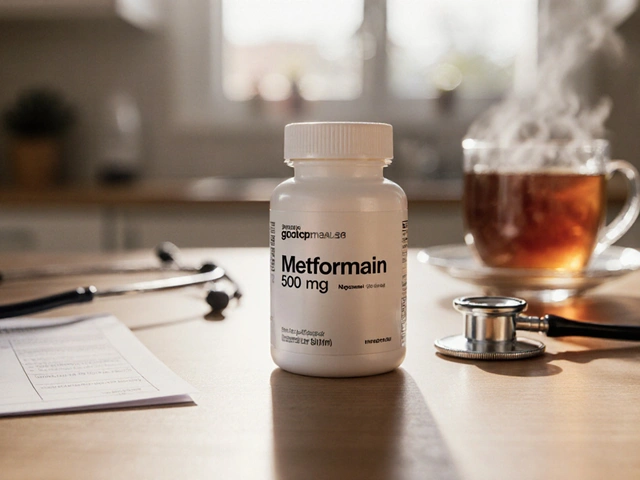Prazosin: Uses, Dosage, Side Effects & Safety Guide
When working with Prazosin, an oral alpha‑1 adrenergic blocker that lowers blood pressure and treats several other conditions, you’ll often see it paired with Hypertension, high‑pressure blood flow that strains the heart and vessels, Benign Prostatic Hyperplasia, enlarged prostate causing urinary urgency and weak stream, and Post‑Traumatic Stress Disorder, a mental‑health condition where vivid nightmares are common. In short, Prazosin is a versatile drug that bridges cardiovascular care and sleep‑related therapy.
How Prazosin Works and Why It Matters
Prazosin belongs to the alpha‑1 blocker family, which means it relaxes smooth muscle in blood vessels. By blocking alpha‑1 receptors, the medication widens arteries, reducing systemic resistance and helping the heart pump more easily. This same mechanism also eases the muscle tone in the prostate and bladder neck, making it a go‑to option for BPH. For PTSD, Prazosin crosses the blood‑brain barrier and dampens the sympathetic surge that fuels nightmare intensity, offering a calmer night’s sleep.
Because it targets different tissues, clinicians often choose Prazosin based on the primary symptom they want to control. If a patient’s blood pressure is the main concern, the dose starts low (usually 1 mg at bedtime) and is titrated up. For BPH, the same low dose can improve urinary flow, but some doctors prefer a slightly higher morning dose to maintain consistent muscle relaxation. When treating PTSD nightmares, bedtime dosing is key, because the drug’s peak effect aligns with REM sleep cycles.
Safety is a big part of the decision‑making process. The most common side effect is a sudden drop in blood pressure when standing up, known as orthostatic hypotension. Patients may feel dizzy or light‑headed, especially after their first dose. To minimize this, doctors advise starting at bedtime, staying hydrated, and getting up slowly in the morning. Rarely, Prazosin can cause a fast heartbeat (reflex tachycardia) or allergic skin reactions.
Drug interactions matter, too. Combining Prazosin with other blood‑pressure‑lowering agents—like ACE inhibitors, diuretics, or other alpha‑blockers—increases the risk of hypotension. Alcohol can amplify the dizziness effect, so moderation is recommended. For patients on antidepressants that affect serotonin, a brief monitoring period helps catch any unexpected changes.
Monitoring labs isn’t usually required for Prazosin, but regular blood‑pressure checks are a must. In the first few weeks, clinicians often schedule visits to adjust the dose based on how the patient feels and any side effects that appear. For PTSD, clinicians also track sleep quality and nightmare frequency using a simple diary.
When it comes to special populations, pregnant or breastfeeding women should avoid Prazosin unless the benefits outweigh the risks, as animal studies suggest possible fetal effects. Older adults may need a lower starting dose because they’re more sensitive to blood‑pressure changes. Kidney or liver impairment doesn’t dramatically affect Prazosin, but dose adjustments may still be prudent.
Beyond the three headline uses, Prazosin shows promise in other niches. Some studies indicate it can help with resistant hypertension when other drugs fail. A handful of trials also explore its role in treating Raynaud’s phenomenon by relaxing peripheral vessels. While evidence is still emerging, the drug’s core action—relaxing smooth muscle—makes these extensions logical.
In practice, real‑world patients often appreciate how a single pill can address multiple issues. Imagine a middle‑aged man with high blood pressure, occasional nighttime urination, and stress‑related nightmares. Instead of juggling three separate prescriptions, his doctor might start him on Prazosin, monitor the outcomes, and fine‑tune the regimen. This simplicity can boost adherence and reduce pharmacy costs.
Below you’ll find a curated set of articles that dive deeper into each of these angles—dosage tips for hypertension, safety checks for BPH, nightmare‑reduction strategies for PTSD, and side‑effect management. Whether you’re a patient looking for clear guidance or a clinician seeking quick references, the collection offers practical insights you can apply right away.
Prazosin vs Alternatives: Quick Comparison of Alpha‑1 Blockers

A concise guide comparing Prazosin with common alternatives, covering uses, dosing, side effects, and cost to help you choose the right medication.
read more



